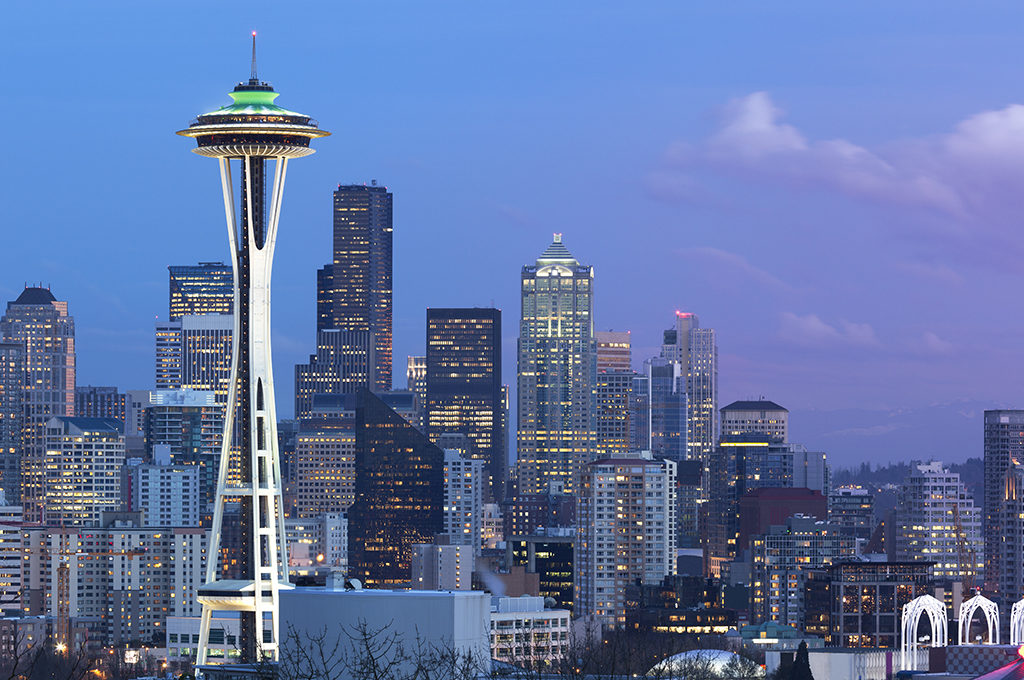The “new era” tech and creative companies—defined for our purposes as firms that have come online in the last 20 or so years, and have grown at substantial rates while subsequently expanding their office footprints—have affected arguably the two most significant components of the commercial real estate business today: the leasing of office space, and what that leased space looks like. Let’s look at the tech and creative companies that are overthrowing traditional drivers of leasing in the U.S., and how current workplace strategy trends—many of which are being driven by Tech/Creative—are influencing other sectors.
At Colliers, we’ve evaluated these trends through the lens of five key cities. If you guessed San Francisco, San Jose/Silicon Valley and Seattle, you obviously wouldn’t be wrong. But you might be surprised at just how much the new creative class has upended cities like Boston and New York, which have historically relied on more traditional industries as their office leasing stalwarts.
In Part Four of our series, we take a closer look at the Seattle market.
Read the latest report on The Impact of “New Tech” Tenants on U.S. Office Leasing
SEATTLE
Seattle, home to Amazon’s corporate headquarters as well as the base of operations for notable new-era tech companies Zillow (founded 2006), WhitePages.com (1997), BuddyTV (2005) and many others, has long been viewed as an appealing Northwestern outpost for creative and tech types. In the first quarter, the Seattle office market continued to perform well, with the vacancy rate shrinking to 8.3 percent and 156,000 square feet of net absorption. These numbers were buoyed by—what else?—several significant deals involving new-era tech firms, including previously signed leases by law-services firm Avvo, Groupon and Uber. There are 24 office buildings under construction across the Seattle region totaling 7.7 million square feet. Amazon has pre-leased the entirety of Schnitzer West’s new Urban Union, totaling 817,000 square feet, and hovers at 13 percent occupancy of the Class A office inventory according to The Seattle Times. Google recently snatched up 600,000 square feet at Vulcan’s Lakefront Blocks. And it isn’t just publicly-traded titans like Google and Amazon who are having all of the fun. Decacorn and social-media darling Snapchat ($16 billion valuation) leased its first official office in Seattle (following several months of utilizing temporary office space) with 8,000 square feet at 101 Stewart in Pike Place Market. The Seattle CBD average asking rent has risen by nearly 10 percent year over year. It’s safe to say that much of that increase can be attributed to the unabated leasing velocity of new-era tech.
Helping to drive positive net absorption are New Tech tenants, Altasource Group, Avalara Europe, Beleave, Coder for Rent, Coverity, Datavail, Edifecs, eZona AG, Inspirage, IOActive, Ivy Softworks, Maestrosoft, Media Recovery, Mobilize.net, Neudesic, OfferUp Now, Qualys, Ramp Technology Group, RIPL, and SeaMonster Studios – all represented by Colliers.
On the workplace-strategy front, Facebook’s new Seattle digs at Dexter Station unsurprisingly will feature some of the most over-the-top amenities imaginable, including a rooftop park with walking trail, giant fire pit and BBQ-style dining area, as well as an indoor hot tub. And, of course, its customary, complementary cafeteria and fully loaded snack bar. Not to be outdone, Amazon is in the midst of plans to open three towers across its new urban campus, which will span three city blocks and will be connected by streetcar to the company’s existing headquarters in South Lake Union. The campus also contains an amphitheater with a stage, fold-up seating and basketball hoops that can be lowered from the ceiling. And moving toward the nontraditional side, Northwestern Mutual subsidiary Russell Investments moved its Seattle operations to an open-office floor plan on large floor plates, which allowed them to increase the number of employees on each floor by 25 percent, increase natural light by replacing walls with glass panes, and foster collaboration through the elimination of private offices. Per The Seattle Times: “Real-estate costs per employee have never been so high … even during the dot-com boom of the late 1990s. Much of the space at large tech firms is amenity space—cafeterias, game rooms and lounges—all part of the “arms race” to recruit and retain the best tech talent.”
The regional vacancy rate declined to 8.7 percent and positive net absorption neared 352,000 SF for the Q2 2016. In Seattle, the vacancy rate dropped to a post-recession low of 7.9 percent, while Q2 absorption totaled 195,000 SF as technology companies other than Amazon are making headlines. Tenants in the market for space exceed 5.7 million square feet of demand.
Also: Read Part One: Overview | Part Two: New York | Part Three: Boston | Part Five: San Francisco | Part Six: San Jose and Silicon Valley
As president of National Office Services for Colliers, Cynthia Foster leads our national office platform across multiple service lines, including capital markets, tenant representation, leasing agency, property management and valuation.

 Colliers Insights Team
Colliers Insights Team

 Sheena Gohil
Sheena Gohil Bob Shanahan
Bob Shanahan Dougal Jeppe
Dougal Jeppe Kai Shane
Kai Shane
 Bret Swango, CFA
Bret Swango, CFA Michelle Cleverdon
Michelle Cleverdon
 Aaron Jodka
Aaron Jodka